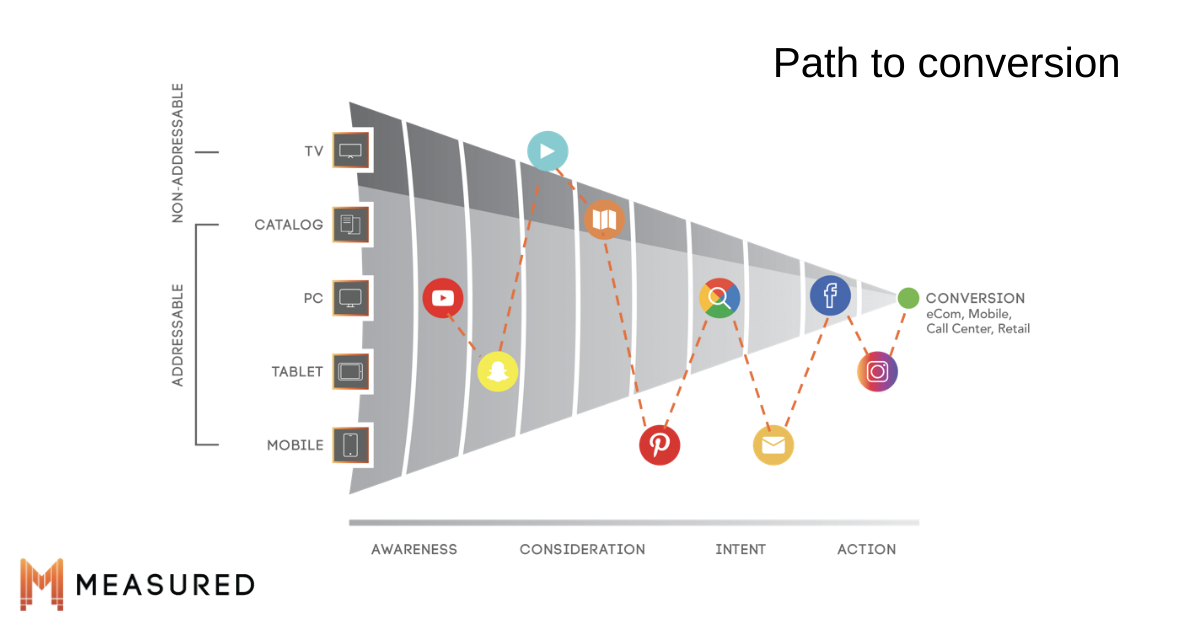

Multi-touch attribution is a marketing analytics method that evaluates the impact of customer touchpoints in driving conversion. Source: Bill Schmarzo “Big Data MBA” What is Multi-Touch Attribution (MTA) For example, knowing the conversion rate is decreasing is interesting and not good news, but businesses would find it a lot more valuable if they knew the variables that would influence the conversion rate’s growth. More businesses want to be forward-looking and their usage of data so that they can answer the questions “What will happen if we do XYZ?”, or “What should we do given the budget situation?”.īusinesses that invest in Data Science find a tremendous amount of business value as they are using the data to be more proactive, or prescriptive so they can take proper action. Businesses want to know what they should be doing. Nowadays, businesses are adopting Data Science to predict what will happen based on historical data trends. Through standard reporting, marketing would try to answer what happened in the past by reviewing the data marketers collected through Tag Manager, web analytics data stored in Google Analytics, or integrated data stored in a data warehouse. Marketers would assess historical campaigns that ran, and apply those learning back into the media or campaign planning.īI has been backward-looking as the focus is about answering the business questions around “What happened?”. Common measures marketers would look at are the traffic volume per each step of the marketing funnel, conversion rates, average order size, etc. BI and the analytics insights you get are evaluated by marketers to understand what happened in the past. It is no surprise that BI (Business Intelligence) is widely adopted in marketing. Data ScienceīI and Data Science play a very important role to help marketers gain data visibility into the marketing metrics

I don’t blame them, every business has different measures. It gives 40% conversion credit each to the first and last interaction, and assign 20% to the rest of the interactions in the middle.ĭespite such reports are available in Google Analytics, there are marketers who are not able to make these reports useful for their campaign optimization efforts. Position Based: A hybrid model of First and Last Interaction.This is a useful model if you wish to give more credit to interaction occurring from the most recent promotion. Time Decay: This model heavily credits the touchpoints that occurred nearest to the time of conversion.Linear: This model gives equal credit across each channel clicked before converting.Last Google Ads Click: Attributes 100% of the conversion to the most recent Google Ads that the customer clicked before converting.Last Non-Direct Click: This model ignores direct traffic to the website and attributes 100% of the conversion to the last channel that the customer clicked before converting.Last Interaction: Attributes 100% of the conversion to the last channel the customer clicked before converting.First Interaction: Attributes 100% of the conversion to the first channel which the customer clicked.The MCF (Multi-Channel Funnels) attribution models include – Google Analytics is known to have over 57% market share in the web analytics category, which is roughly over 4.5 million companies. Multi-Channel Funnels (or MCF) attribution model in Google Analytics is one of the most known attribution model reporting features that are widely used by marketers. Google Analytics and Multi-touch attribution


 0 kommentar(er)
0 kommentar(er)
